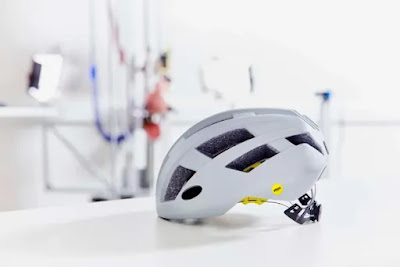What is MIPS, how does it work and is it really worth it?
As avid cyclists, we understand the importance of staying safe while riding. Cycling Helmets are one of the most critical pieces of equipment for any cyclist, but with so many options on the market, it can be challenging to choose the right one. That's where MIPS technology comes in. In this article, we'll explain what MIPS is, how it works, and why it's essential for your safety.
What is MIPS?
MIPS stands for Multi-directional Impact Protection System. It's a revolutionary helmet technology that's designed to protect your brain from rotational forces that can occur during a crash. Traditional helmets are designed to protect against linear impacts, such as hitting the ground head-on. However, rotational forces are equally as dangerous and can cause more significant damage to the brain. MIPS technology is designed to reduce those forces and protect your brain in the event of an accident.
How does MIPS work?
MIPS technology works by adding a low-friction layer to the helmet's interior. This layer is made up of a slip plane that sits between the helmet's shell and the rider's head. In the event of an impact, the slip plane allows the helmet to rotate slightly around the rider's head, reducing the rotational forces that can cause brain injury.
To put it simply, MIPS technology works like a seatbelt for your brain. It reduces the force of an impact and helps protect your brain from injury.
Why is MIPS important for your safety?
Studies have shown that rotational forces can cause more significant damage to the brain than linear impacts alone. In fact, rotational forces are believed to be a leading cause of concussions and other traumatic brain injuries in cyclists. By reducing those forces, MIPS technology can help prevent or minimize the severity of brain injuries in the event of an accident.
It's essential to note that MIPS technology is not a guarantee of safety. No helmet can fully protect against all types of head injuries. However, MIPS technology has been shown to be effective in reducing the risk of brain injury in real-world accidents.
How do I choose a helmet with MIPS technology?
When shopping for a helmet with MIPS technology, there are a few key factors to consider. First, make sure the helmet is certified by a recognized safety organization, such as the Consumer Product Safety Commission (CPSC) or Snell Memorial Foundation. Second, look for a helmet that fits properly and is comfortable to wear. A helmet that doesn't fit correctly won't provide adequate protection, regardless of the technology it contains.
Finally, consider the type of riding you'll be doing. Different helmets are designed for different types of cycling, such as road racing, mountain biking, or commuting. Make sure you choose a helmet that's appropriate for your needs and the type of riding you'll be doing.
MIPS vs. Other Helmet Safety Features
While MIPS technology is relatively new, there are other safety features available in helmets. Some of the most common safety features include:
Crash Replacement Guarantee: Some helmet manufacturers offer a crash replacement guarantee. If your helmet is damaged in an accident, they'll replace it for free or at a discounted price.
In-Mold Construction: In-mold helmets have a hard outer shell that's fused to a softer inner foam layer. This construction method creates a helmet that's lightweight and durable.
Impact Foam: Impact foam, such as Expanded Polystyrene (EPS), is a foam material that's designed to absorb and disperse impact energy.
Aerodynamics: Some helmets are designed with aerodynamics in mind, which can improve your speed and reduce wind resistance.
While these features can improve helmet safety, they don't address the issue of rotational forces that MIPS technology is specifically designed to combat. If you're looking for the highest level of helmet safety, a helmet with MIPS technology is a must-have.
How Effective is MIPS Technology?
MIPS technology has been shown to be effective in reducing the risk of brain injury in real-world accidents. In a study conducted by the Swedish insurance company Folksam, helmets with MIPS technology reduced the risk of brain injury by up to 30 percent compared to helmets without MIPS.
Another study conducted by Virginia Tech's Helmet Lab found that helmets with MIPS technology received higher safety ratings than helmets without it. In fact, of the top-rated helmets in their study, all but one had MIPS technology.
Conclusion
MIPS technology is a game-changer in helmet safety for cyclists. By reducing rotational forces, it can help prevent or minimize the severity of brain injuries in the event of an accident. When choosing a helmet, make sure to look for one with MIPS technology and ensure it's certified by a recognized safety organization, fits correctly, and is appropriate for your needs.
Remember, your brain is worth protecting, and a helmet with MIPS technology is an excellent way to do that. Stay safe out there!







.jpg)
Comments
Post a Comment